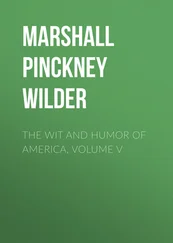After visiting the pyritous marls of the Rio Juagua, we continued following the course of the crevice, which stretches along like a narrow canal overshadowed by very lofty trees. We observed strata on the left bank, opposite Cerro del Cuchivano, singularly crooked and twisted. This phenomenon I had often admired at the Ochsenberg, * in passing the lake of Lucerne. (* This mountain of Switzerland is composed of transition limestone. We find these same inflexions in the strata near Bonneville, at Nante d'Arpenas in Savoy, and in the valley of Estaubee in the Pyrenees. Another transition rock, the grauwakke of the Germans (very near the English killas), exhibits the same phenomenon in Scotland.) The calcareous beds of the Cuchivano and the neighbouring mountains keep pretty regularly the direction of north-north-east and south-south-west. Their inclination is sometimes north and sometimes south; most commonly they seem to take a direction towards the valley of Cumanacoa; and it cannot be doubted that the valley has an influence* on the inclination of the strata. (* The same observation may apply to the lake of Gemunden in Styria, which I visited with M. von Buch, and which is one of the most picturesque situations in Europe.)
We had suffered great fatigue, and were quite drenched by frequently crossing the torrent, when we reached the caverns of the Cuchivano. A wall of rock there rises perpendicularly to the height of eight hundred toises. It is seldom that in a zone where the force of vegetation everywhere conceals the soil and the rocks, we behold a great mountain presenting naked strata in a perpendicular section. In the middle of this section, and in a position unfortunately inaccessible to man, two caverns open in the form of crevices. We were assured that they are inhabited by nocturnal birds, the same as those we were soon to become acquainted with in the Cueva del Guacharo of Caripe. Near these caverns we saw strata of schistose marl, and found, with great astonishment, rock-crystals encased in beds of alpine limestone. They were hexahedral prisms, terminated with pyramids, fourteen lines long and eight thick. The crystals, perfectly transparent, were solitary, and often three or four toises distant from each other. They were enclosed in the calcareous mass, as the quartz crystals of Burgtonna,* (* In the duchy of Gotha.) and the boracite of Lunebourg, are contained in gypsum. There was no crevice near, or any vestige of calcareous spar.* (* This phenomenon reminds us of another equally rare, the quartz crystals found by M. Freiesleben in Saxony, near Burgorner, in the county of Mansfeld, in the middle of a rock of porous limestone (rauchwakke), lying immediately on the alpine limestone. The rock crystals, which are pretty common in the primitive limestone of Carrara, line the insides of cavities in the rocks, without being enveloped by the rock itself.)
We reposed at the foot of the cavern whence those flames were seen to issue, which of late years have become more frequent. Our guides and the farmer, an intelligent man, equally acquainted with the localities of the province, discussed, in the manner of the Creoles, the dangers to which the town of Cumanacoa would be exposed if the Cuchivano became an active volcano, or, as they expressed it, "se veniesse a reventar." It appeared to them evident, that since the great earthquakes of Quito and Cumana in 1797, New Andalusia was every day more and more undermined by subterranean fires. They cited the flames which had been seen to issue from the earth at Cumana; and the shocks felt in places where heretofore the ground had never been shaken. They recollected that at Macarapan, sulphurous emanations had been frequently perceived for some months past. We were struck with these facts, upon which were founded predictions that have since been almost all realized. Enormous convulsions of the earth took place at Caracas in 1812, and proved how tumultuously nature is agitated in the north-east part of Terra Firma.
But what is the cause of the luminous phenomena which are observed in the Cuchivano? The column of air which rises from the mouth of a burning volcano* is sometimes observed to shine with a splendid light. (* We must not confound this very rare phenomenon with the glimmering commonly observed a few toises above the brink of a crater, and which (as I remarked at Mount Vesuvius in 1805) is only the reflection of great masses of inflamed scoria, thrown up without sufficient force to pass the mouth of the volcano.) This light, which is believed to be owing to the hydrogen gas, was observed from Chillo, on the summit of the Cotopaxi, at a time when the mountain seemed in the greatest repose. According to the statements of the ancients, the Mons Albanus, near Rome, known at present under the name of Monte Cavo, appeared at times on fire during the night; but the Mons Albanus is a volcano recently extinguished, which, in the time of Cato, threw out rapilli;* (* "Albano monte biduum continenter lapidibus pluit."—Livy lib. 25 cap. 7. (Heyne, Opuscula Acad. tome 3 page 261.)) while the Cuchivano is a calcareous mountain, remote from any trap formation. Can these flames be attributed to the decomposition of water, entering into contact with the pyrites dispersed through the schistose marl? or is it inflamed hydrogen that issues from the cavern of Cuchivano? The marls, as the smell indicates, are pyritous and bituminous at the same time; and the petroleum springs at the Buen Pastor, and in the island of Trinidad, proceed probably from these same beds of alpine limestone. It would be easy to suppose some connexion between the waters filtering through this calcareous stone, and decomposed by pyrites and the earthquakes of Cumana, the springs of sulphuretted hydrogen in New Barcelona, the beds of native sulphur at Carupano, and the emanations of sulphurous acid which are perceived at times in the savannahs. It cannot be doubted also, that the decomposition of water by the pyrites at an elevated temperature, favoured by the affinity of oxidated iron for earthy substances, may have caused that disengagement of hydrogen gas, to the action of which several modern geologists have attributed so much importance. But in general, sulphurous acid is perceived more commonly than hydrogen in the eruption of volcanoes, and the odour of that acid principally prevails while the earth is agitated by violent shocks. When we take a general view of the phenomena of volcanoes and earthquakes, when we recollect the enormous distance at which the commotion is propagated below the basin of the sea, we readily discard explanations founded on small strata of pyrites and bituminous marls. I am of opinion that the shocks so frequently felt in the province of Cumana are as little to be attributed to the rocks above the surface of the earth, as those which agitate the Apennines are assignable to asphaltic veins or springs of burning petroleum. The whole of these phenomena depend on more general, I would almost say on deeper, causes; and it is not in the secondary strata which form the exterior crust of our globe, but in the primitive rocks, at an enormous distance from the soil, that we should seek the focus of volcanic action. The greater progress we make in geology, the more we feel the insufficiency of theories founded on observations merely local.
On the 12th of September we continued our journey to the convent of Caripe, the principal settlement of the Chayma missions. We chose, instead of the direct road, that by the mountains of the Cocollar* (* Is this name of Indian origin? At Cumana I heard it derived in a manner somewhat far-fetched from the Spanish word cogollo, signifying the heart of oleraceous plants. The Cocollar forms the centre of the whole group of the mountains of New Andalusia.) and the Turimiquiri, the height of which little exceeds that of Jura. The road first runs eastward, crossing over the length of three leagues the table-land of Cumanacoa, in a soil formerly levelled by the waters: it then turns to the south. We passed the little Indian village of Aricagua surrounded by woody hills. Thence we began to ascend, and the ascent lasted more than four hours. We crossed two-and-twenty times the river of Pututucuar, a rapid torrent, full of blocks of calcareous rock. When, on the Cuesta del Cocollar, we reached an elevation two thousand feet above the level of the sea, we were surprised to find scarcely any forests or great trees. We passed over an immense plain covered with gramineous plants. Mimosas with hemispheric tops, and stems only four or five feet high, alone vary the dull uniformity of the savannahs. Their branches are bent towards the ground or spread out like umbrellas. Wherever there are deep declivities, or masses of rocks half covered with mould, the clusia or cupey, with great nymphaea flowers, displays its beautiful verdure. The roots of this tree are eight inches in diameter, and they sometimes shoot out from the trunk at the height of fifteen feet above the soil.
Читать дальше












